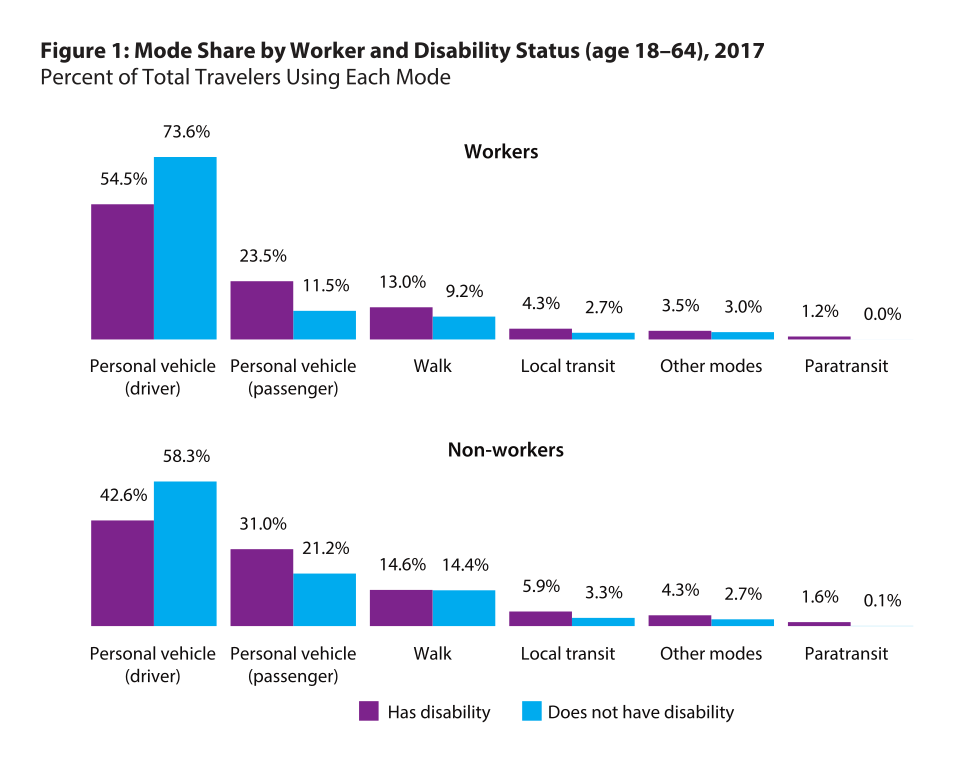Thursday, September 6, 2018
According to “Travel Patterns of American Adults with Disabilities,” an estimated 25.5 million Americans have a disability that limits their mobility, and 3.6 million are unable to leave their home due to a disability or mobility issue. The Bureau of Transportation Statistics prepared the report using data from the 2017 National Household Travel Survey to examine the daily travel patterns of adults who self-identify as having a disability that limits their mobility.
People with disabilities who have limited mobility face mobility challenges because they have lower rates of car ownership and use than people without disabilities, are less likely to be employed, and live in very low-income households. People with disabilities travel less than people without disabilities, and when they do use their own car, they do so more often as passengers.

Note: “Other transportation” includes bicycles, golf carts, recreational vehicles, school buses, private or charter buses, intercity buses, taxis, limousines (including Uber and Lyft), rental cars, planes, boats, and ferries.
Source: U.S. Department of Transportation, Federal Highway Administration, 2017 National Household Travel Survey.
People with disabilities use a variety of strategies to compensate for their transportation limitations. The two most common strategies are reducing daily trips (71%) and getting others to drive them (44%).
Figure 2: Compensation strategies for people with disabilities limiting travel (aged 18-64), 2017
Source: U.S. Department of Transportation, Federal Highway Administration, 2017 National Household Travel Survey.
Technology could help solve these transportation challenges, but people with disabilities have low access to existing technologies like smartphones and ride-hailing services. Autonomous vehicles and other assistive technologies could help people who previously couldn’t drive get around.

